RAIN, RAIN GO AWAY
Come again another day!
by TurfPro Editor, Laurence Gale MSC, MBPR
Many soil based pitches will be struggling to cope with the amount of rainfall the country has experienced recently - with many clubs on limited budgets finding the going particularly difficult.
The title of today's blog is a well-known folklore saying that is no doubt on many people’s minds at present - especially those in vulnerable flood areas.
The counties of Worcester, Herefordshire and Shropshire have particularly borne the brunt of the recent severe weather, with the rivers, Severn and Wye flooding large tracts of land and causing millions of pounds worth of damage.
I found some interesting rainfall stats on the Headland Amenity website.
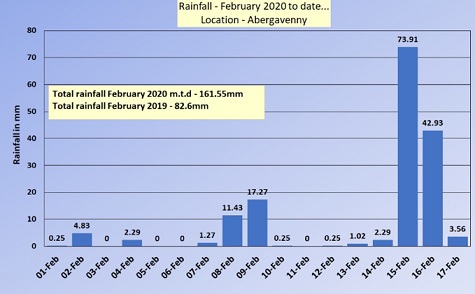
For several years Mark Hunt, technical manager for Headland Amenity has been writing a valuable weather blog for grounds professionals that is well worth a look at.
The above graph shows that to date, we have received double last year’s rainfall total for February in Wales (161.55 mm). This coupled with the downpours we had last year, makes this one of the wettest winters for over 20 years.
This has also been borne out by the number of matches that have been called off due to the weather. The two recent storms, Storm Ciara and Storm Dennis have caused deaths, structural damage, travel disruptions and severe flooding across the country over the course of two successive weekends.
It is certainly going to be testing time for many of our practising groundsmen and women, especially with more rain forecast. Most, if not all, soil based pitches will be struggling to cope with this amount of rainfall. The best solution is to keep off until the surface water disappears and the top begins to dry off.
Playing on saturated pitches will only end in tears, with a lot of surface damage and loss of grass cover. Even pitches with installed drainage systems are now struggling to cope with the shear amount of rainfall.
Last week, I inspected two Midlands rugby clubs, Bredon Star and Bromsgrove RFC, on behalf of the RFU to look at some drainage issues. Both clubs have pitches that ideally need to be drained to improve their playability during the winter months. Bredon Star RFC have not been able to play on their pitches since November!

There is no doubt that there will many sports clubs who will be counting the cost of lost fixtures and seeking help to repair, renovate and indeed install drainage schemes to improve the condition of their playing facilities after this testing year of poor winter weather.
For many clubs, the problem often lies in the fact that they are not investing enough time and money in the general maintenance and end of season renovations of their pitches. Many clubs can tend to do the bare minimum, which often relates to mowing and marking out, with little other work being done unless it has become a problem.

These pitches are the life blood of the clubs and more thought and commitment should be channeled to increase the expenditure for grounds maintenance. Yes, there is a cost attributed to maintaining pitches properly, but it’s value for money in the long term.
This attitude of the grounds budget having the lowest priority seems to be common amongst too many sports clubs - including cricket, bowls, football and rugby. Having myself, like most sportsmen, been brought up within the club system, starting as a junior, going on to represent your county and play for more senior clubs, this journey would not have happened without the national club structure we have in the UK.
So how do we put a price on the value of these community clubs and what they provide for many hundreds of thousands of people every weekend? To quibble about the cost of maintaining these vital assets is a crying shame.
I am fully aware of the constraints and costs of running these clubs, with so much to pay for in terms of staff wages, utility bills, coaches, players, machinery, building maintenance and any loans they may have.
One of the main problems, is the fact that clubs are not charging enough for memberships. An average fee can be anything between £50-£150, with youth membership half or three quarters the cost.
However, taking that as a norm a club of 200 plus members paying around £100 per member will only generate around £20,000 pounds. This can be compounded by the fact that many players get out of paying anything or indeed want paying for playing!
Whist on the subject of paying players, in the long term is it really a good policy for the clubs? Would that money be better spent on improving the facility? I have seen, over the years, many clubs going down this route, often via a rich benefactor. This often comes to an end when the individual decides to leave the club, leaving them in a perilous position. The question we must ask, is at what league level should players be paid?
Running a sports club requires a lot of effort and commitment from members. Most clubs have keen ex playing members who take up volunteer roles within the club. However, the larger clubs will have several paid professionals, coaches and bar and facility staff that need paying.
Therefore, most clubs need to rely on other ways to raise much needed funds – for example, bar takings, functions, events and sponsorship. However, the success of these is purely down to the club’s committee being well run and having a good social side to the club.
I would not be surprised to find that most small-sized clubs probably need to raise in excess of £120,000 plus annually to function, taking into account all the overheads they now have.
Based on using professional contractors who are carrying out a fairly intense maintenance programme that consists of regular mowing, feeding, marking out, aeration weed killing and end of season renovations that encompasses scarification of the pitch in two ways, vertidraining, topdressing 60 tonnes of sand, overseeding and fertilising - I would see that work costing around £12,000 per pitch.
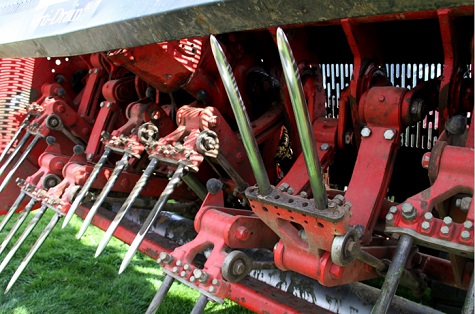
However, in reality most clubs are only getting their pitches mown and marked out - with perhaps one application of selective weed killer and fertiliser. Based on contractors’ prices, 30 cuts and a weekly pitch marking coupled with some other works, will cost around £2500-3000 per pitch.
At the end of the day there is a cost for maintaining natural grass pitches. Even if you get free labour, (club volunteers) the club will still need to invest in machinery and materials.
My point is, how do we value these clubs, in what they provide for the community? There are literally hundreds of thousands of kids and adults benefiting from the running of these facilities.
If you and I want to join a fitness gym, in most cases they will be charging over £500 pounds to join. So, is it about time we start investing in our own beloved sports clubs and ensure they are here for the next generation of potential sporting stars?

Grass root sports clubs are essential assets in every village and town. If we do not support them and, more importantly, pay enough membership fees to help them maintain these facilities, then before long we will see a demise and death of many clubs.
I firmly believe that sporting governing bodies could do more to help support these grass root clubs. However, attention seems to be focussed on higher ranking sports clubs. It is the village and town clubs that need more help and assistance in managing their facilities.
Working with potential industry partners, there is no reason why clubs cannot be helped in getting the right funding and support to deliver a fit-for-purpose playing facility. Thanks to the lottery we have seen many clubs prosper from this investment, where capitol monies have been used to build new pitches, provide floodlights, install artificial pitches and install drainage schemes.
However, there has never been a pot of money for maintenance. Maybe there should be a proportion of the capital funding set aside for initial maintenance to ensure the facility is functional for at least three years after installation? This would allow the club time to find the additional funding for this new facility.
As mentioned in a recent blog, Spring Has Sprung, now is the time to start planning and getting your end of season work quotations ready. Securing the services of a contractor may be difficult this year. There is going to be a high demand for their services after such a tough winter.

To finish, I would like to take the opportunity to thank Simon Hewitt (head of marketing at STIHL) for inviting me and my wife along to see Leicester Tigers play Wasps at Welford Road recently. I, along with several other media influencers, were very well looked after during the day. We had a tour of the stadium, changing rooms and pitch, and enjoyed some pre-match entertainment with guest speakers that included Tigers players and Ian Robertson international match commentator.
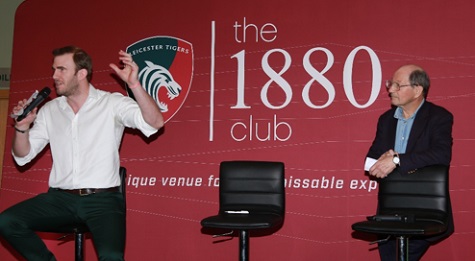
Having played against the Tigers myself in 1980, some 40 years ago, it was nice to see behind the scenes and see how things may have changed. In fact the changing rooms, although moved to a different stand, they were just like the ones we used all those years ago. They are not large by any means. We also had the chance to Speak to ED Mowe, the club’s head groundsman, who in three years has turned the pitches around. And testament to his work, the pitch looked and played perfectly during Storm Dennis.

So, to end such a stormy week, I would like to you all to think about those unsung heroes (groundstaff) who up and down the country are endeavouring to keep pitches playable during this challenging winter period. Hopefully clubs will start to see the benefit of investing more money for the maintenance and upkeep of their valuable pitches.
 |
|
 |  |
OPEN SUPPORT TEAM ANNOUNCED
For the 149th Championship
This week's WEB ONLY story is The Open 2020 is heading to Sandwich in Kent this July and BIGGA has revealed which of its members have been selected to join the volunteer support team that will help maintain playing standards throughout the event.
GROUNDCARE SEMINAR ATTENDED BY OVER 150
Held at Durham CCC
Over 150 volunteers and professionals representing schools, sports clubs, local authorities and contractors from all over the UK attended the annual Dennis and SISIS groundcare seminar recently.
Hosted at Durham County Cricket Club’s Emirates Riverside Stadium on 18th February, over 150 volunteers and professionals representing schools, sports clubs, local authorities and contractors from all over the UK attended this year's Dennis and SISIS groundcare seminar.
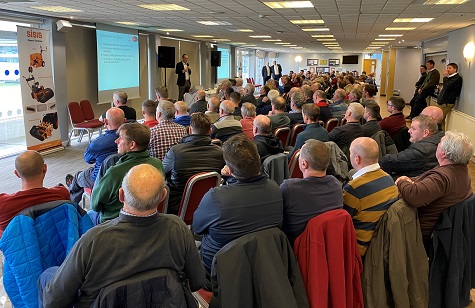
Marcus North, Durham Director of Cricket and former Australian batsman, kick-started the event. The left-handed batsman, who played 21 Tests for his country and played for five counties in England, proceeded to offer a unique insight into all the various pitches he has played on throughout the world. Not only did his talk offer a glimpse into an international cricket player’s perspective but it also offered an interesting insight into a club’s relationship with the groundstaff.
Iain James from TGMS Ltd followed with a plethora of advice on the construction and maintenance of a cricket pitch. Iain went through every stage of a construction process offering some valuable tips to those who carry out the work in-house but also presented the questions one should be asking of a contractor. Iain covered the six key stages of construction - planning, design, build, grow-in, preparation and play.
Delegates then heard from the Institute of Groundsmanship’s Ian Powell who provided a number of helpful tips in his presentation entitled ‘Principles of decision making for pre-season preparations’. Ian discussed the utmost important aspects of pre-season preparations including seeding, rolling, scarification and nutrition.
Rounding off the morning, delegates had an opportunity to listen to and question some of the industry’s finest groundsmen. Hosted by Vic Demain (Durham CCC), this new feature entitled Groundsman's Corner, saw a panel of experts including Keith Kent (Head Pitch Advisor for Rugby Groundsmen Connected), Jim Dawson (Head Groundsman at BT Murrayfield), Karl McDermott (Head Groundsman at MCC Lord’s), Sean Williams (Head Groundsman at Gloucestershire CCC) and Gordon Gill (Former Head Groundsman at Bath CC). An interesting range of topics were explored and, in particular, the use of social media in the industry sparked an informative debate.
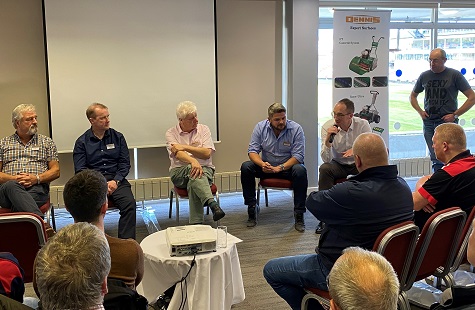
After lunch, Barry Glynn hilariously reflected on his career in ‘Frustrations of a Groundsman: Part 2’ before Keith Kent proceeded with a presentation entitled ‘Winter Sports Pitches to Cricket Outfields – what do we need to do?’ Keith drew on his wealth of experience as a groundsman to explore the transformation of winter sports pitches into cricket outfields.
In his presentation, Keith described the groundcare industry as a brotherhood; a family in which everyone should be supporting their colleagues and the general consensus in the room at the end of the day was that this event was an exemplary demonstration of camaraderie – no matter what your title or position.
One delegate, Derek Traill of Cricket Scotland, said: “The key message coming out of today’s event is that it is all about communication and to strive to learn off one another - we learn from one another’s experiences, failures and successes and from these we can build on them and improve as one.”
Karl McDermott meanwhile, said he was encouraged to see so many young people in attendance. “Sometimes you go to these kinds of events and it is mostly retired groundsmen that are helping out their local clubs – which is fantastic because they benefit a lot from the advice they receive. However, there has been a real good mix today and we need to look to the future and keep on trying to get the younger generation into this industry.
“Events like this Dennis and SISIS seminar will only help,” he continued. “This is a great chance to network and to chat to people and actually discover that no matter what level you are at, club or recreational to test match level – we all have the same problems.”
 |  |
ALLETT CELEBRATE QUEEN'S AWARD
With visit from Lord-Lieutenant
Last week, Allett Limited welcomed the Queen’s representative in Staffordshire to meet the staff and present a commemorative vase and ‘Grant of Appointment’ deed.
Last week, Allett Limited welcomed the Lord-Lieutenant, Mr Ian Dudson, the Queen’s representative in Staffordshire to meet the staff and present a commemorative vase and ‘Grant of Appointment’ deed for the Queen’s award for Enterprise.
In April 2019 Allett won the Queen’s Award for Enterprise: International Trade 2019 in recognition of its growth in exports and contribution to the British economy.
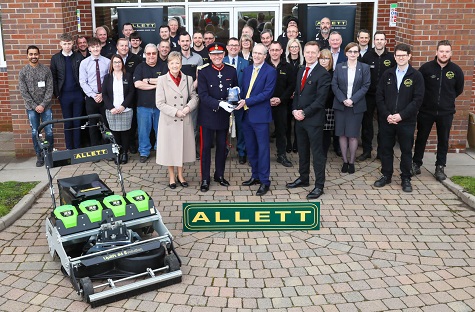
Lord-Lieutenant, Mr Ian Dudson, the Queen’s representative in Staffordshire making the presentation to the Allett team
Allett won this award after the company had demonstrated exceptional and year-on-year growth in export sales over a five year period and had made a minimum of £100,000 in export sales in the first year of entry.
The Russia World Cup was an important factor in Allett’s overseas sales success however the company has also seen a huge rise in sales to other countries such as America where sales into the top baseball and football clubs has been a strong and growing market.
Export Manager Dave Allett played a major role in partnership with Allett’s Russian distributors, Moscow based Unisaw, before the world’s biggest football tournament to supply host stadiums, training grounds and contractors with a range of Allett machinery.
Dave Allett and James Till (Allett Director) were invited to attend a Royal Reception at Buckingham Palace last summer.
“We’re very honoured to receive the Queen’s Award,” said Austin Jarrett, Allett’s managing director, “This prestigious award recognises our achievements and team efforts in bringing innovative developments in our mowing systems to meet challenges in overseas markets with large potential.
"Because of increased export sales the business no longer subject to the seasonality of sales cycles in the UK. Our mowers and turf maintenance systems are used throughout the world where they maintain sports surfaces and lawns to the highest standards. The groundsmen in the UK are acknowledged to be the best in the world and these customers demand the highest standards from their equipment suppliers.
"This relentless demand from our UK customers over the years have driven our engineering team to improve and develop our mowing systems which subsequently help to produce near-perfect sports surfaces and garden lawns. Allett have benefited from this and we are confident that we can deliver higher standards to the stadiums and lawns using our systems in the rest of the world. Every one of our machines proudly bears a Union Flag decal, and this really helps us in our export markets where the UK is revered for their lawns.
"We will be hosting Pitch Maintenance training seminars in China this year,” added Austin, “to help set standards and expectations for the playing surfaces in this huge country which is growing rapidly as a footballing nation. Allett is more than just a machine. We’re strengthening our technical support and embarking on a plan of new product development to concentrate on a wider range of grass and sports turf maintenance products.”
As part of the Award ceremony at Regal House, Allett’s manufacturing facility, Allett held a celebration this week to celebrate their success. The Lord-Lieutenant of Staffordshire was on hand to present the Directors with a ‘Grant of Appointment’ (an official certificate) and a commemorative crystal trophy. After a factory tour, the Lord-Lieutenant took the opportunity to talk with Allett employees over lunch.
Lord Lieutenant Ian Dudson said, “Another Staffordshire manufacturing company leading the world in product design, performance, quality and reliability which has driven outstanding continuous growth in overseas sales over the last six years to achieve this well deserved prestigious recognition. It was great to be able to meet the entire workforce to offer congratulations and continued success.”
 |  |
INTERNATIONAL AWARD FOR DEERE'S NEW GREENS MOWERS
AE50 honour presented in U.S
The 2700 and 2750 PrecisionCut and E-Cut hybrid electric triplex mowers have been honoured by the American Society of Agricultural and Biological Engineers.
After launching in 2019, John Deere’s 2700 and 2750 PrecisionCut and E-Cut hybrid electric triplex mowers have been honoured as a 2020 AE50 Award winner by the American Society of Agricultural and Biological Engineers (ASABE).
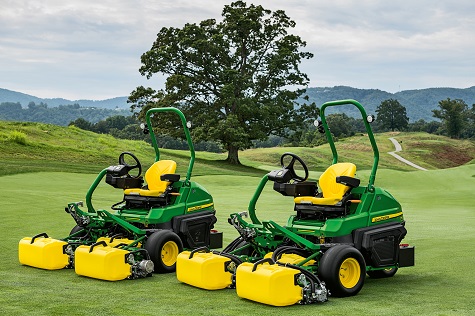
Each year the AE50 awards highlight innovative designs in product engineering, as chosen by a panel of international engineering experts. John Deere say the development of these new cylinder mowers was based on customer needs and challenges - most importantly, the struggle to find quality labour and tight operating budgets.
With this in mind, the mowers are equipped with the TechControl system, which is passcode protected and allows course managers, technicians and other trusted supervisors to input commands that control nearly everything regarding the operator's performance. This includes frequency of clip, turn speed, clean-up pass speed and how fast the cutting units raise and lower.
“Our customers are battling a variety of challenges, from labour to budgets. The 2700 and 2750 triplex mowers have been designed to directly tackle these concerns and take the stress out of mowing,” says John Deere Golf product manager Brad Aldridge. “From the TechControl system to the open platform design and excellent cut quality, these machines deliver a precise, uniform cut, regardless of who’s driving.”
ASABE is an international scientific and educational organisation dedicated to the advancement of engineering applicable to agricultural, food and biological systems. Each year the Society announces and presents the AE50 awards at the ASABE Agricultural Equipment Technology Conference held in Louisville, Kentucky in February.
 |  |
CRICKET WORLD GROUNDCARE AWARDS 2020 LAUNCHED
At Groundcare seminar
Organisers say the awards were introduced to recognise the dedication and hard work that turf professionals put into maintaining and producing cricket squares and outfields.
The Cricket World Groundcare Awards 2020 were officially launched at the Dennis and SISIS GroundCare seminar at Durham CCC on Tuesday February 18th.
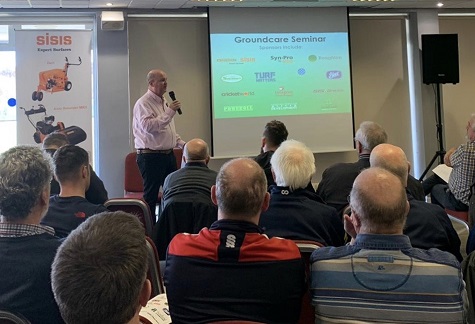
Alastair Symondson, head of media at Cricket World, announces the launch of the Cricket World Groundcare Awards 2020
The organisers say the awards were introduced to recognise the dedication and hard work that turf professionals put into maintaining and producing cricket squares and outfields, for recreational clubs, schools and universities in the UK and Ireland.
The organisers also hope that the awards will raise the profile and awareness of groundcare staff as well as encouraging and promoting the groundcare industry.
There are several award categories and the judging process will be taking into account the quality of the playing surface, general upkeep of the ground, longevity of service, an 'against all odds' and an overall Groundcare Person of the Year. Every nomination for the judging process will receive a special Certificate of Recognition for the Individual and the Club/School and the winners will be invited to a special presentation at Lord’s Cricket Ground.
Alastair Symondson, Head of Media, Cricket World said, “We are delighted to be running these Awards again, with the support and assistance from our sponsors and partners. We also understand the dedication and hard work that goes into preparing cricket playing facilities and it is nice that we can recognise their hard work and endeavours in some small way.”
Roger Knight, former First Class cricketer and past CEO/Secretary of the MCC said, ”These are the stalwarts of recreational cricket clubs and schools and we should thank them all - how gratifying it is to see a past winner of the Cricket World Cricket GroundCare Awards now taking charge at the Home of Cricket as well - Karl McDermott ”
The awards are sponsored by Dennis & Sisis, Iseki and Boughton Loam.
 |  |
FAIRWAY RECOVERY COMPLETED
At Boat of Garten Golf Club
Head greenkeeper Michael Mann has been tending to some of the fairways worst affected by the 2018 drought, the overseeding of which is now much quicker and easier he says due to their new SpeedSeed 1100 from Charterhouse.
While the drought of the summer of 2018 may be a distant memory for some, other clubs are still feeling the effects of the damage caused.
One such club is Boat of Garten Golf Club in the Scottish Highlands, where head greenkeeper Michael Mann has been tending to some of the worst affected fairways. The overseeding of which is now much quicker and easier he says, due to their new SpeedSeed 1100 from Charterhouse Turf Machinery.
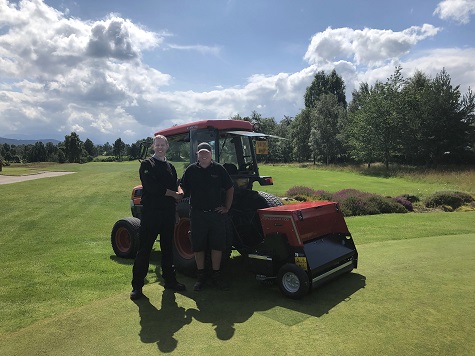
Michael Mann (right) taking delivery of his SpeedSeed 1100 from Craig Chalmers of MacGregor Industrial Supplies
The 18-hole, James Braid designed course is renowned for its challenging play and the cleverly shaped, undulating fairways.
“The sharp undulations can pose quite a challenge when it comes to maintenance and finding machinery that can work with the challenging terrain,” explains Michael, who has been at Boat of Garten for just under a year. “When we needed a new overseeder, we looked at three or four different makes and models, one of which was the new SpeedSeed from Charterhouse. Its compact size meant it could closely follow the uneven ground, so it worked out to be the best option for us.
“After we took delivery of the SpeedSeed from MacGregor Industrial Supplies in July 2019," continued Michael, "we were out with it pretty much straight away, overseeding the greens and some of the worst affected fairways. It’s such a great size, suitable for use site-wide.”
By the back end of 2019, thankfully recovery work reached a conclusion, but Michael now looks forward to utilising the SpeedSeed to its full advantage as we enter the new growing season. “While we don’t have a set overseeding programme, now that we have the seeder at our disposal we can look to capitalise on any growth windows and start to work on other projects around the course – weather permitting of course!”
 |  |
BALMERS GM APPOINTED BY WESSEX
As Proline dealers
Burnley based dealership say they are pleased to enhance their professional portfolio of groundcare equipment.
Burnley based dealership, Balmers GM say they are pleased to announce that they have recently been appointed Wessex Proline dealers.
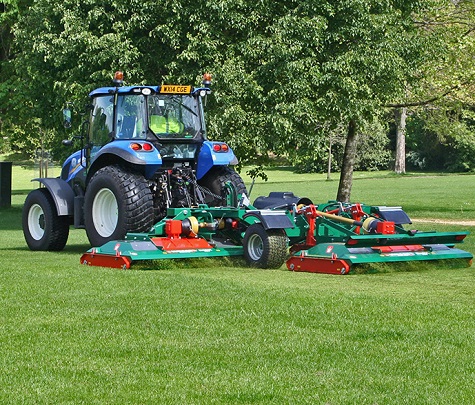
Steve Pulman, Balmers' commercial sales manager said, "We're really pleased to add the Wessex Proline franchise to further enhance our professional portfolio of quality groundcare equipment."
The Proline range includes front and rear mounted rotary decks, trailed roller mowers and finishing mowers
|
 |  |
ADVERTISE YOUR JOBS HERE
Amazing success rates!
Advertise your recruitment needs on TurfPro Weekly Briefing and reach our targeted audience of recipients every week.
Contact Nikki Harrison for details - 01491 837117
|
 |  |
WIN A TRIP TO LOUISVILLE!
Your chance for you and a guest to attend GIE+EXPO in the USA this October
The Outdoor Power Equipment Institute (OPEI) and TurfPro is giving one lucky turf professional plus their guest, the chance to visit GIE+EXPO, the international landscape, outdoor living, and equipment show in Lousiville, USA, in October 2020.

The Outdoor Power Equipment Institute (OPEI) is giving one lucky reader plus their guest, the chance to visit GIE+EXPO, the international landscape, outdoor living, and equipment show in Louisville, USA, in October 2020.
The winner of this amazing free to enter competition, who must currently work as a turf professional, will win two tickets to the show as well as travel to the US, transfers and accommodation.
SUPPORTED BY

Between the 21st-23rd October, GIE+EXPO will showcase the hottest products and technological innovations in the global outdoor power equipment industry - and you could be immersed in the latest developments plus be able to network with peers from across the world.
Throughout the three days you will be able to visit over 1000 exhibitors across the showfloor. There is even 20 acres of outdoor space for demonstrations and test-driving, so you can put the equipment through its paces.

This really is an incredible opportunity to get away from the business for a few days and to come back with a wealth of new ideas from across the globe.
To enter the competition and for full terms and conditions click here.
 |
|
 |  |
 |  |
 |  |
 |  |
 |  |
PHYSICAL CONTROL OF TURFGRASS PESTS
An urgent problem
by Andrew Turnbull, MRes, AllTurf Management
The withdrawal of chemical pesticides has left many turf professionals with no apparent answer to the devastation caused by insect larvae of the Crane Fly (Leather Jackets) and Chafer Beetle (Chafer Grubs).
Turfgrass pests are becoming a very urgent problem for many turfgrass managers in the UK.
The withdrawal of chemical pesticides has left many with no apparent answer to the devastation caused by insect larvae of the Crane Fly (Leather Jackets) and Chafer Beetle (Chafer Grubs).
There is, however, hope as effort is put into finding legal alternatives to chemical pesticides.
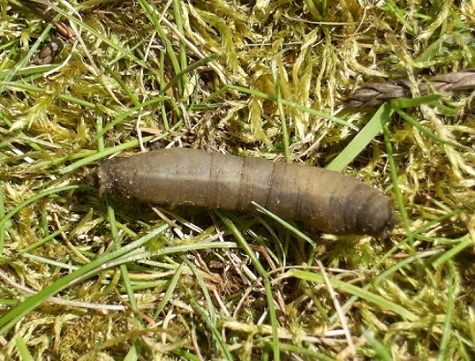
Control of pests falls within three types:
- Chemical
- Biological
- Physical
Chemical controls
With rapid advances in the physical, chemical, and biological sciences since the late 19th century, pest control became focussed on using cost effective and quick acting synthetic based chemicals. The recognition that these formulations have harmful effects on human health and can cause widespread environmental damage has led to their gradual withdrawal. The turfgrass industry is now faced with only Emergency Authorisation for some formulations to control insect larvae, e.g. Acelepryn in 2019, and which can only be applied once per year.
Biological controls
Biological controls, e.g. using proprietary nematodes and genetically engineered bacteria, can help but the cost is prohibitive for many golf and sports clubs. Specific conditions have to be met before application of some of these methods, e.g. temperature and moisture, making success a lottery. Low cost compost teas and biostimulants can be extremely effective when used over a period of time and are an area of expertise of mine. The key is understanding which biostimulant is required for specific purposes, i.e. pest control, rooting and heat/cold tolerance.
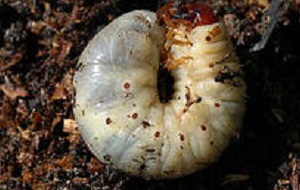
Yet, even with regular use of biological controls and biostimulants, there comes a time when a pest or fungal pathogen needs to be controlled, i.e. sometimes you just need to kill something! Protecting your employer’s asset, and your job security, takes priority over how pests are controlled and this situation creates a demand for alternative control methods, such as physical controls.
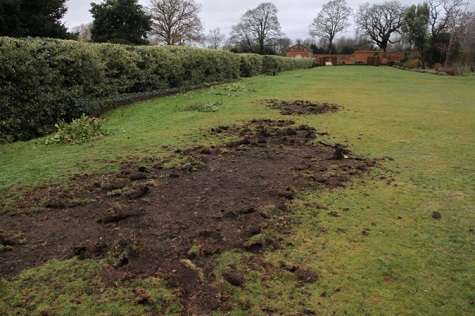
Physical controls
Greenkeepers and Groundsmen are familiar with chemical pesticides and many are using biological methods, but not so many are aware of the available physical controls. Due to the tremendous success of chemicals physical control methods have been set aside, and some people may view the use of physical control methods as a step backward to some distant, pre-industrial age. However, recent advances have resulted in an increase in research and application of physical controls. Physical control methods are grouped under two main classes, passive and active;
1. Passive controls include:
• Physical barriers, defined as any living or non-living material used to restrict movements or to delineate a space, such as trenches and fences to stop crawling and flying insects
• Organic and artificial material mulches
• Particle films, e.g. kaolin, which disrupt insect feeding habits
• Inert dusts, e.g. lime, common salt, sand, kaolin, paddy husk ash, wood ash, clays, diatomaceous earths, synthetic and precipitated silicates and silica aerogels
• Trapping
• Oils, which act primarily at contact sites by obstruction of the respiratory system (hypoxia)
• Surfactants and soaps, which have an interaction with water on insect and larvae cuticles and causing drowning by helping water to infiltrate tracheae
2. Active physical controls
Active methods are used to destroy, injure, or induce stress in crop pests or to remove them from the environment, and can be classified according to the mode of energy use and include:
• thermal shock (heat or cold)
• electromagnetic radiation (microwaves, UV & visible light and radio frequencies)
• mechanical shock,
• pneumatic control (blowing or vacuuming tools).
Are physical controls regulated?
The regulatory framework for physical control differs markedly from that for agrochemical products. Many physical techniques are subject to rules concerning how they are applied, rather than how they control pests, and are designed to protect users and the general public. For example, the use of propane gas requires specialized training, as does the use of spraying equipment.
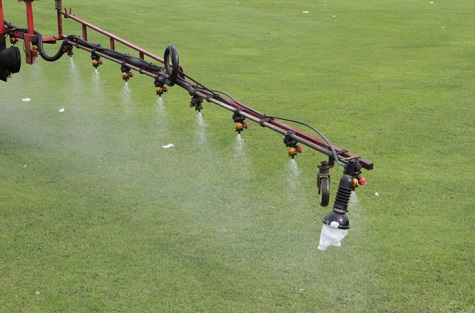
In the UK, chemical pesticides fall under the Plant Protection Products (Sustainable Use) Regulations 2012 (PPPR). On enquiring about products that work by physical action I received the following statement from the HSE:
Where a product has been determined by a scope exercise to act by physical means, then it is no longer considered to be in scope of PPPR and HSE have no jurisdiction over those products; however what we are able to action on is to ensure that such products are not making claims that fall under the scope of PPPR, even if they are considered to be a low health risk.
In summary, physical controls are not classed as pesticides and do not come under the PPPR, unless pests are controlled by actions similar to a chemical pesticide, e.g. poisoning.
Chemical and biological methods are sometimes incompatible but biological, cultural, and physical methods can be compatible. Industry demand, and economic and legislative incentives, will necessitate the use of physical control methods as alternatives to chemical pesticides.
Example of a physical control product
TurfSolv is a blend of food grade vegetable oil and surfactants and is totally safe for human health and welfare. The product works by the oil/surfactant coating and penetrating into every orifice of the pest and it dies from asphyxiation, which is a classed as physical control. In other words, TurfSolv:
• controls pests of turf
• is fully legal to use
• is totally safe to use
The application rate is 10L of TurfSolv in 1000L of water per hectare. It is a lot of water but the 1:100 dilution is critical in how the product works. If too much product is used it will not be diluted sufficiently to get into every pore of the pest and stop it from respiring. It will be easier for most users to dilute 5L in 500L water and apply to 5000m2, and then do it again for the full hectare.
For severe infestations apply once, and then again 7 days later. Assess the control and apply again 7 days after the second dose if necessary. Otherwise, apply every 3-4 weeks to keep control. The grubs take a few days to die and the second/third sprays will ensure that larvae are caught at different growth stages.
More information can be found at www.turfsolv.com - it is very American but we will be manufacturing in the UK this year and are developing UK websites and info.
This gives the turfgrass industry hope that effective insect pest control is still possible. TurfSolv is currently supplied from the USA but will shortly be manufactured in the UK.
For information on pricing contact Andrew Turnbull on 07900 692052, or andrew@grassexpert.co.uk.
 |
|
|
|